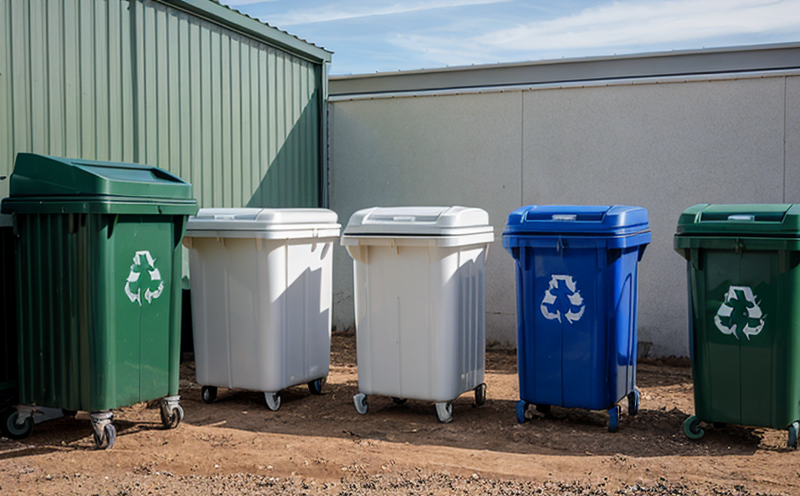ASTM D5988-21 Soil Biodegradation Simulation
The ASTM D5988-21 standard provides a method to simulate soil biodegradation in an accelerated manner. This test is essential for the evaluation of packaging materials, particularly those intended for composting or landfills where environmental degradation is a key concern.
The ASTM D5988-21 procedure involves placing samples within a sealed vessel containing a defined composition of soil. The vessel is then incubated under controlled conditions to simulate accelerated biodegradation over a set period, typically 30 days for plastics and up to 6 months for other materials. This method allows quality managers, compliance officers, R&D engineers, and procurement teams to assess the durability and degradation rate of packaging materials in an efficient manner.
Biodegradation is a critical factor when considering sustainable and eco-friendly packaging solutions. Products that demonstrate high biodegradability are not only better for the environment but can also meet regulatory requirements. By using ASTM D5988-21, manufacturers can ensure their products will decompose safely in natural environments without causing harm.
The test is particularly relevant for polymers such as polyethylene (PE), polypropylene (PP), and biodegradable materials like polylactic acid (PLA). It also applies to composite films, coatings, and other materials that come into contact with soil during disposal. Understanding the biodegradation behavior of these materials helps in optimizing their design for sustainability goals.
The ASTM D5988-21 method is widely recognized by regulatory bodies like the European Commission and the United States Environmental Protection Agency (EPA). Compliance with this standard ensures that packaging materials are tested under consistent conditions, providing a reliable basis for decision-making regarding material selection and product design. This standard is crucial in fostering innovation towards more sustainable practices within the packaging industry.
| Standard | Description |
|---|---|
| ASTM D5988-21 | American Society for Testing and Materials standard for soil biodegradation simulation. |
| EN 17033 | European Norm for compostable plastics. |
| ISO 14855 | International Organization for Standardization guideline on biodegradable materials in soil. |
The ASTM D5988-21 simulation is not just a laboratory exercise; it reflects real-world conditions that packaging faces during its lifecycle. By using this method, manufacturers can predict how their products will perform over time and make necessary adjustments to enhance their environmental friendliness.
Moreover, the results of ASTM D5988-21 tests are often used as part of broader sustainability assessments. They provide valuable insights into the environmental impact of packaging materials throughout their lifecycle—from production to disposal. This information is pivotal for companies aiming to reduce their carbon footprint and comply with increasingly stringent environmental regulations.
In conclusion, ASTM D5988-21 plays a vital role in advancing sustainable packaging solutions by offering an accurate and reliable method to assess soil biodegradation. Its application ensures that the products used are not only functional but also environmentally responsible.
Why It Matters
The significance of ASTM D5988-21 lies in its ability to provide a standardized approach for evaluating the biodegradation properties of packaging materials. This standard is crucial for several reasons:
Environmental Impact Assessment: By assessing how quickly and effectively packaging materials decompose, manufacturers can gauge their environmental impact. Products that show high rates of biodegradation contribute less to landfills and help reduce pollution.
Regulatory Compliance: Many regions have strict regulations regarding the disposal of non-biodegradable materials. ASTM D5988-21 helps companies ensure they meet these standards, avoiding potential fines and penalties.
Innovation and Sustainability: The test drives innovation in material science by encouraging the development of more sustainable packaging solutions. This focus on sustainability is increasingly important as consumers demand greener products.
Customer Satisfaction: Companies that can demonstrate a commitment to environmental responsibility are likely to gain customer trust, which can lead to increased sales and brand loyalty.
In summary, ASTM D5988-21 is not just a technical standard; it represents a step towards a more sustainable future. By using this method, businesses ensure they contribute positively to the environment while maintaining competitive advantage in the market.
Applied Standards
| Standard | Description |
|---|---|
| ASTM D5988-21 | American Society for Testing and Materials standard for soil biodegradation simulation. |
| EN 17033 | European Norm for compostable plastics. |
| ISO 14855 | International Organization for Standardization guideline on biodegradable materials in soil. |
| OECD Guidelines for Testing of Chemicals, Series No. 309: Methods for the Biodegradation of Organic Compounds in Soil | Organisation for Economic Co-operation and Development guidelines to assess soil biodegradation. |
The application of these standards ensures that testing results are consistent and comparable across different laboratories, which is crucial for maintaining trust and reliability within the industry. Compliance with these standards also enhances a company's reputation and market positioning by demonstrating a commitment to sustainability and regulatory compliance.
Scope and Methodology
The ASTM D5988-21 soil biodegradation simulation involves placing samples within a sealed vessel containing a defined composition of soil. The vessel is then incubated under controlled conditions to simulate accelerated biodegradation over a set period, typically 30 days for plastics and up to 6 months for other materials.
The scope of the test includes various types of packaging materials such as polyethylene (PE), polypropylene (PP), polylactic acid (PLA), and composite films. The methodology ensures that all tested samples undergo identical conditions, allowing for accurate comparisons between different materials.
During the simulation, temperature and humidity are carefully controlled to replicate real-world soil conditions. This controlled environment helps in observing the degradation process more effectively than would be possible in a natural setting. The test also involves regular monitoring of the vessel’s contents to track changes in the samples over time.
The results of ASTM D5988-21 tests are reported based on weight loss or mass change, which indicates the extent of biodegradation. Additionally, visual observations and chemical analysis may be conducted to provide a comprehensive understanding of the degradation process.
By following this standardized procedure, manufacturers can ensure that their products meet the required standards for biodegradability and compostability. This ensures not only compliance with environmental regulations but also supports the development of more sustainable packaging solutions.





